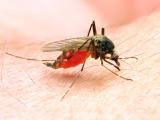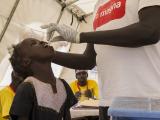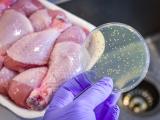Jun 18, 2010
Oil spill may spur growth of oyster-contaminating bacteria
The massive oil spill in the Gulf of Mexico is likely to stimulate the growth of oil-consuming marine bacteria, possibly including pathogenic species that are sometimes found in oysters, according to a New York Times report. One pathogenic Vibrio species, V parahaemolyticus, has "a deep thirst for crude oil," says the report by Paul Voosen of the Greenwire news service. The species rarely causes serious illness, but another Vibrio species, V vulnificus, does cause serious illness, and experts suspect it, too, may be stimulated by the oil. Vibrio populations grow in the summer, and scientists say there is a good possibility that the spilled crude oil and the "organic flotsam" it leaves behind will further spur the growth of the bacteria. A US Food and Drug Administration (FDA) spokeswoman, Meghan Scott, said the FDA is aware of the Vibrio threat but believes the bacteria will decline as the oil is degraded. Most oyster reefs in the spill-affected area are currently closed, the report said.
Jun 17 New York Times report
FDA says fake Tamiflu sold online contains antibiotic
The FDA warned yesterday that a drug sold over the Internet as "Generic Tamiflu" is fake and contains cloxacillin, an antibiotic in the penicillin class. The drug does not contain Tamiflu's active ingredient, oseltamivir, and cloxacillin may cause allergic reactions in people who are allergic to penicillin, the agency said. The FDA bought the fraudulent product from a Web site that is no longer operating, but the product is likely to be sold by other online sources, officials said. They noted that there is no generic version of Tamiflu. The agency said people who buy drugs from online pharmacies should look for the Verified Internet Pharmacy Practice Sites (VIPPS) seal, awarded by the National Association of Boards of Pharmacy to sites that apply and meet state licensure requirements.
Jun 17 FDA announcement
Researchers track bush meat traffic into Europe
In the first formal study of the international trade of bush meat, a possible source of zoonotic diseases, researchers estimated that travelers smuggle more than 270 tons a year in their personal luggage through Paris's Charles de Gaulle Airport, according to an early online report in Conservation Letters. French and British animal health experts working with customs officials searched 134 passengers from 29 flights over 17 days. They found 11 bush meat species, including primates, crocodiles, and pangolins. They interviewed three traders in Paris and found that traders sell their goods on the street and take individual orders in advance and that the business is lucrative. The Central African Republic, Cameroon, and the Democratic Republic of Congo were the main sources of bush meat. About 39% of the meat was from animals on an international endangered species list. The study group concluded that bush meat trade will likely continue unless surveillance improves and smugglers and sellers face stiffer penalties.
Jun 17 Zoological Society of London press release
Jun 7 Conservation Letters abstract
Malaria studies shed light on blood cell infection, evolution
In two malaria developments, Penn State researchers have found an alternate way the parasite can attack red blood cells, and a group from Europe found that Plasmodium falciparum is much older than previously thought. In the first study, published in PLoS Pathogens, researchers have known for years that the parasite uses glycophorins to enter red blood cells but that some other protein is also involved, because infections can occur without glycophorins. To determine the other protein, they examined complement receptor 1 (CR1), suspected of playing a role in malaria complications, in the invasion of red blood cells with laboratory and Kenyan malaria strains. They found that malaria can use the CR1 protein if it encounters a variant lacking the glycophorin receptor, the immune system mounts a response based on previous infection, or if the host was immunized with a vaccine that blocks the glycophorin pathway. The group wrote that all invasion pathways need to be identified to develop a vaccine that blocks red blood cell invasion.
Jun 17 PLoS Pathogens study
In the second study, published in Current Biology, researchers who sequenced the DNA of the world's largest collection of malaria parasites found that the parasite evolved alongside humans tens of thousands of years earlier than previously thought. Experts had originally thought that the disease developed alongside agriculture, about 10,000 years ago. However, the group's genetic analysis showed that the disease moved out of Africa with humans about 60,000 to 80,000 years ago. Lead researcher Dr Francois Balloux, from the Medical Research Council (MRC) Centre for Outbreak Analysis and Modeling at Imperial College in London, said in a press release that genetic sequencing shows similarities to humans in terms of geographic origin, age, and global spread. He said understanding the genetic diversity of the parasite can help guide more effective control strategies.
Jun 17 Current Biology abstract
Jun 17 EurekAlert press release



















